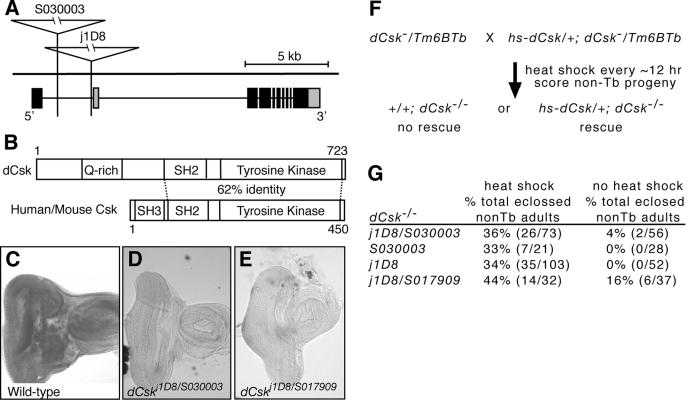FIG. 1.
Mutations in dCsk. (A) Diagram of the dCsk locus. Grey boxes illustrate alternative 5′ and 3′ exons. j1D8 and S030003 are inserted within the first intron of the predominant dCsk transcript. j1D8 is 75 bp upstream and S030003 is 2.3 kb upstream of the first exon of the second dCsk transcript. S017909 was not sequenced, but it maps to 86E, the cytological region that contains dCsk (18). (B) Predicted domain structure of dCsk protein and comparison between dCsk and mammalian Csk. The protein identity for the SH2 kinase domain is indicated. (C to E) In situ hybridization of third instar eye-antennal imaginal discs with a DNA probe to dCsk shows broad staining (C) that is lost in dCsk mutant tissue (D and E). dCsk mutant tissue was photographed at twice the exposure to visualize the tissue. (F and G) Diagram and results of rescue experiments with a heat shock-induced dCsk transgene (hs-dCsk). Only half of the dCsk−/− progeny per sample received the hs-dCsk transgene. We were unable to independently score for the presence or absence of the transgene, so all dCsk−/− larvae and pupae were monitored for rescue. Therefore, a maximum of 50% of the total dCsk−/− progeny have the potential to be rescued per sample. Rescued dCsk mutants were almost always viable normal adults. Heat shock of wild-type control animals only nominally affected adult eclosure (data not shown). Tb marks nonmutant (Balancer) chromosomes and indicates phenotypically normal heterozygous flies.

